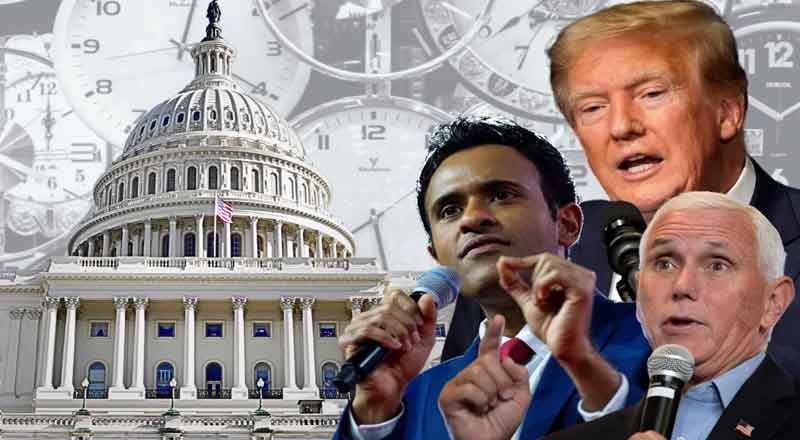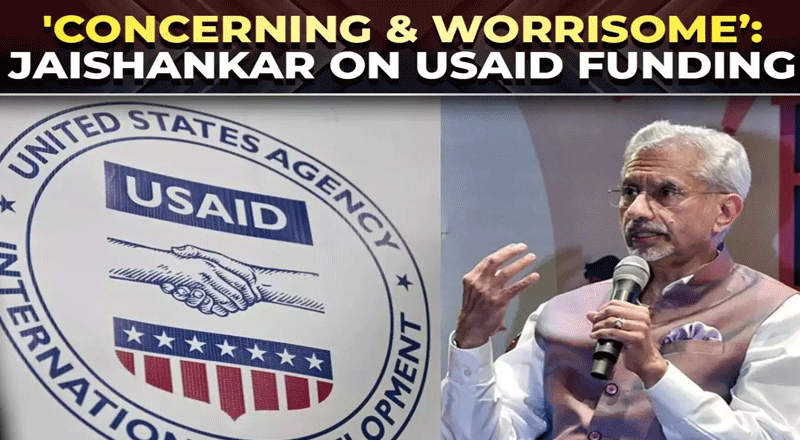A government shutdown occurs when Congress fails to approve funding for federal agencies. Before 1980, agencies largely continued operating during a lapse in funding with the assumption that Congress would act quickly. But in 1980 and 1981, then-Attorney General Benjamin Civiletti authored a series of legal opinions that found government agencies didn’t have the authority to continue running during a gap in funding.
The U.S. House and Senate on Tuesday plan to take sharply divergent paths in a high-stakes spending battle, with just five days remaining until a deadline that could force wide swaths of the government to shut down for the fourth time in a decade.
The Democratic-controlled Senate plans to vote on a stopgap funding bill with bipartisan support that would keep the federal government operating after current money runs out at midnight on Saturday (0400 GMT Sunday), giving negotiators more time to agree on full-year spending numbers.
Meanwhile, Republican House of Representatives Speaker Kevin McCarthy, aiming to hold off a rebellion by Hardline members of his own caucus, will push ahead with four full-year spending bills that reflect conservative priorities and stand no chance of becoming law.
Hundreds of thousands of federal workers will be furloughed and a wide range of services, from economic data releases to nutrition benefits, will be suspended beginning on Sunday if the two sides do not reach agreement. In Washington, the National Zoo says it would have to curtail its farewell party for three giant pandas before they return to China.
Congress has shut down the government 14 times since 1981, though most of those funding gaps have lasted only a day or two. Though disruptive, they have not had a significant impact on the world’s largest economy.
But Moody’s warned on Monday that a shutdown this time would have negative implications for the U.S. government’s AAA credit rating, as it would highlight how political polarization is worsening the country’s fiscal standing.
Democratic President Joe Biden and McCarthy had aimed to head off a shutdown this year when they agreed in May, at the end of a standoff over the federal debt ceiling, to discretionary spending of $1.59 trillion for the fiscal year beginning Oct. 1.
Lawmakers on McCarthy’s right flank have since rejected that number, demanding $120 billion in cuts, even as more moderate members of their party including top Senate Republicans voiced support for the agreed-on plan.
That only accounts for a fraction of the total U.S. budget, which will come to $6.4 trillion for this fiscal year. Lawmakers are not considering cuts to popular benefit programs like Social Security and Medicare, which are projected to grow dramatically as the population ages.
Republicans control the House by a narrow 221-212 majority and have few votes to spare, particularly since some Republican hardliners have threatened to move to oust McCarthy from his leadership role if he relies on Democratic votes to pass legislation.
Biden himself has called on House Republicans to honor McCarthy’s deal.
Despite the looming shutdown deadline, the House will turn its attention first to the four full-year bills, which even if they pass would not fund the full government or prevent a shutdown. Success is not guaranteed: Republican hardliners blocked action on spending bills last week and some have said they would try to do so again.
If McCarthy surmounts that first obstacle, the debate could consume most of the week, leaving little time to hammer out a stopgap bill before Sunday. Republican Representative Ralph Norman, a member of the Hardline House Freedom Caucus, said on Monday he was “100%” certain that Congress would not be able to keep the government open. McCarthy said he was more optimistic. “I’m working everything we can to make sure this doesn’t happen,” he told reporters on Monday. “I always like the ball at the last second.”
How that might play out is unclear at this point. If the Senate passes a stopgap funding bill, McCarthy could allow a vote in the House, where it could pass with support from Democrats and more pragmatic Republicans.
But that could prompt Republican hardliners to act on their threat to depose McCarthy, plunging the chamber further into chaos.
Former President Donald Trump, the front-runner for the 2024 Republican nomination, has been cheering on the shutdown talk, saying on his Truth social media site, “UNLESS YOU GET EVERYTHING, SHUT IT DOWN!”
(With inputs from agencies)





